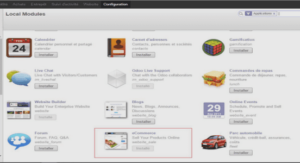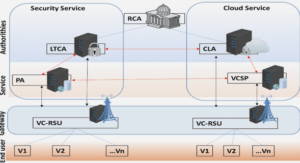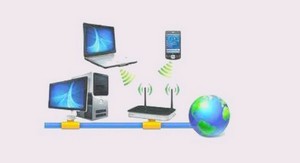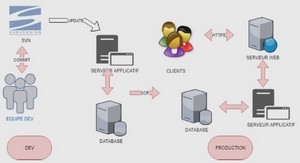MEMS Energy Harvesting Sources
A MEMS device is a micrometer scaled system made using microfabrication techniques that is used to sense or control physical events. MEMS applications are limitless, from optics to RF components to lab-on-chip and many more. Among the sensing applications is the use of these micro devices for energy harvesting.
There are many stray energies in our living space that can be used as energy sources. The mature research on large-scale application of environment energy is not applicable and cannot be used to harvest and store these natural energies in small-scale applications such as wireless sensor nodes. Hence, many research work is approaching energy harvesting technologies for these applications. There are different harvesting approaches that includes thermal, photovoltaic, RF and vibrational harvesting.
Thermal
Thermal energy harvesters are often based on the Seebeck effect in which the temperature difference between two dissimilar conductors produces a voltage difference. They are widely used, however for micro scale solutions the thermoelectric materials have to be chosen to be compatible with clean room processing for their integration into MEMS devices.
Photovoltaic
Photovoltaic technology is very well developed on macroscale. Photovoltaic cells convert incoming photons into electricity. Outdoors, there is sufficient energy unlike indoors where illumination levels are much lower where the energy density drops to about 10 µW/cm².
Radio Frequency
RF energy harvesting from that available through public telecommunication services (e.g. GSM and WLAN frequencies) is hindered by very low power density levels. An example of harvesting energy from a TV tower by Intel was demonstrated by (Sample et Smith, 2009) .
Vibrations
On the other hand, vibration energy harvesters have the advantage that they can be more easily implemented with MEMS technology. They rely on a more common energy source which is vibrations. The ability to fabricate the converters with silicon based MEMS technology improves the level of integration possible with silicon based microelectronics. Vibration energy harvesting converts mechanical displacement present in the environment into electrical energy. It provides high power densities, low cost, compact in size and more easily implemented with MEMS technology.
Vibrational Energy Harvesters
Three main converters enable to turn mechanical energy into electricity: electrostatic devices, piezoelectric devices and electromagnetic devices. . In general, the output voltage tends to be too low in the case of electromagnetic transducers and too high in the case of electrostatic transducers. The highest power output is achieved with piezoelectric conversion for MEMS energy harvesters (Vullers et al., 2010b; Vullers et al., 2009). The electrostatic and piezoelectric harvesters are easy to fabricate with small sizes (1-10 mm), while electromagnetic energy harvesting devices are relatively larger. A few µW of power and up to several mW can be achieved depending on the transducer type.
Electromagnetic Energy Harvesters
Electromagnetic induction is based on the motion of an electrical conductor in a magnetic field, and an electric current is generated. Usually it is done by means of a permanent magnet, a coil and a resonating cantilever. A micromachined electromagnetic energy harvester has been presented in (Kulkarni et al., 2007) by moving a magnet in between two microfabricated coils. The device volume is 150 mm3 and it generated about 586 nW of power across 110 ohm load when excited by an acceleration of 8.829 m/s2 at 60 Hz .
Electrostatic Energy Harvesters
Electrostatic energy harvesters are capacitive devices made of two plates separated by a dielectric material. As the two plates move relative to each other, this generates a capacitance variation and consequently electric charges. Electrostatic converters are of two types: electret free and electret-based. Electret-free electrostatic converters use conversion cycles made of charges and discharges of the capacitor while the others use electrets, giving them the ability to directly convert mechanical power into electricity (Lin et al., 2015). These converters are based on a variable capacitive structure where different capacitor shapes can be employed.
Detailed models of three different electrostatic vibration energy harvester design concepts are developed in (Roundy, Wright et Pister, 2002). The three design concepts: in-plane overlap (capacitance changes by changing overlap area of fingers), in-plane gap closing (capacitance changes by changing gap between fingers), and out-of-plane gap closing (capacitance changes by changing gap between two large plates), are evaluated and compared based on simulations and practical considerations. Their simulations indicate that the highest power density is achieved with in-plane gap closing converters, followed by out-of-plane gap closing converters, and finally by in-plane overlap converters.
Piezoelectric Energy Harvesters
The interest in piezoelectric energy harvesting has grown since the early 2000s, though the piezoelectric effect has been discovered much before. The research focused on the concept of converting mechanical strain into electric voltage or current using piezoelectricity has went in different directions. Some work focused on studying piezoelectric materials and creating new materials with superior characteristics to the ones currently available. Mostly materials such as single crystal (e.g. quartz), piezoceramic (e.g. lead zirconate titanate PZT), thin film (e.g. zinc oxide) and polymeric materials (e.g. polyvinylidenefluoride PVDF). Other works looked into hybrid designs with piezoelectric harvesters combined with other energy harvesting phenomena like electromagnetic for instance (Yang et al., 2010). On the other hand, most of the research focused on exploring new design architectures to create these resonant structures. The first of these structures that is still dominant is the use of a simple beam structure (Shen et al., 2008) (Aramaki et al., 2017) (Wang et al., 2017). Often a mass is being attached to the cantilever beam (Marzencki, Ammar et Basrour, 2007) (Elfrink et al., 2009). For e.g. the piezoelectric harvester in (Marzencki, Ammar et Basrour, 2007) achieved 40 µW when measured on a PZT based harvester with beam dimensions of 400 µm × 800 µm and mass volume of 800 µm × 800 µm × 400 µm and the one in (Elfrink et al., 2009) 60 µW on an AlN based harvester with beam dimensions of 1mm × 5 mm and mass volume 5mm×5mm×400 µm.
INTRODUCTION |





